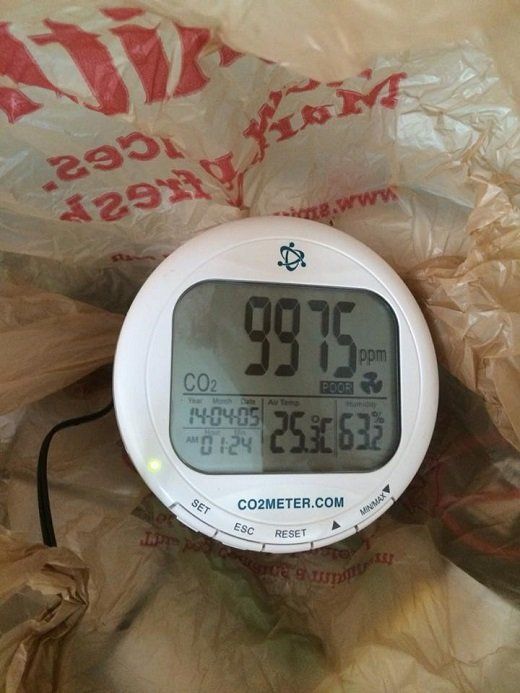Published Monday February 9, 2015: Updated March 21, 2018
(Not to be confused with a CO or carbon-monoxide meter).
For well over 150 years we have known that CO2 is a greenhouse gas and excess levels of it will warm the Earth. To see this process in action, check out your local elementary school for a science demonstration that uses 2 identical, clear bottles, 2 thermostats, some dry-ice and a couple of incandescent lights.

CO2 levels over the past 400,000 years.
Earth's atmospheric C02 levels have slowly varied naturally throughout the ice ages. Only recently, in the last 150 years have CO2 levels started an unnatural progression quickly upward. As long as global CO2 levels remain below 350 ppm, global warming will not be a problem and climate as we know it will remain the same. Unfortunately, we smashed the 350 ppm mark back in the 1980's and broke 400 ppm for the first time in 2015. This is a level not seen in Earth's atmosphere in perhaps 8 million years. Like it or not, through our fossil fuel burning ways, humanity is drastically altering the Earth's climate.

CO2 levels over the past 50 years.
CO2 as an Indoor Pollutant
While measuring and tracking global CO2 levels is a good indicator of climate change and global warming, measuring CO2 levels inside the home is also an indicator of air quality and good ventilation inside the home.
For as little as $109, you can buy your own CO2
Meter.

A typical CO2 reading of 768 ppm (parts per million) inside our home.
A home will have more air exchanges with the outside air when the temperature difference between the inside and outside is greater. Cold air outside (greater temperature difference), will cause the most air leakage/exchange. When it's windy outside, air is also exchanged more quickly.
In a home that does not have enough ventilation, VOCs, (volatile organic compounds) and other pollutants can increase and reach unhealthy/dangerous levels.
CO2 is an easily identifiable and measurable gas. While high CO2 levels are not necessarily a bad thing for occupants living inside a home, when CO2 levels are high, that is a rough indicator that VOCs and other pollutants, (that are harmful to us) are also at elevated and dangerous levels.
Foul smells are also an indicator of pollutants in the house.

Very high levels of CO2 inside a plastic bag after breathing in a few breathes.
I should get an O2 meter now. Since 10,000 ppm of CO2 is only 1% and normal air is around 20% oxygen, there is probably a lot more oxygen still in the bag than CO2, but breathing this much CO2 for a long time would still be dangerous.
Typical CO2 levels at Church:
I get sleepy at church. Besides being boring, perhaps another reason is simply not enough ventilation? So during an especially crowded meeting, (it was the ever-popular primary program), I took some readings. The overflow in the back of the chapel was open and full of people but all the doors were closed.

Sacrament Meeting CO2 levels (11/2014 chapel doors closed)
OK, so I'm a nerd and I just got this CO2 meter! Can you blame me? Maybe because it was the primary program but I didn't get sleepy this time. Levels were elevated but not alarmingly so. Ventilation is sufficient.
Now let's go into the very crowded Relief Society room for Sunday school.

Sunday School (a packed room with the doors closed).
CO2 levels were higher but still, not alarmingly so, considering ~100 people were in the small classroom, I'd say the ventilation system was working sufficiently well.
CO2 Levels in the house:
I spent a lot of effort air sealing our home but am concerned that perhaps it is now too air tight. A long-term indoor CO2 level of more than 1000-1500 ppm is considered un-healthy, (not from CO2 itself but due to other pollutant levels that could also be elevated). I was relieved to find that rarely does our house CO2 levels exceed 1000 ppm. Only during very mild days do the CO2 levels climb much higher than that and it is during these times we might open the windows anyway.

Seasonal CO2 levels inside the home
Operating an indoor clothes dryer pulls air from the house, increasing your HVAC bills. In homes that are poorly ventilated, it may also serve to ventilate the old stale air and cause fresh outdoor air to be drafted inside. During the seasons when the attic air is hotter than the temperature inside the house, our clothes dryer does not draft air from inside the house.
